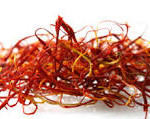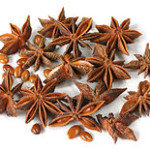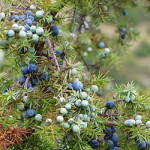Ciao a tutti!
After reviewing traditional Italian herbs, it’s time for spices! We have a basic list of the most commonly used spices in the Italian kitchen. Italy, in generally, is rather limited on the use of spices, being a country where the cuisine is more herb-oriented. Many spices vary from region to region. Spicier and sweeter foods are usually found more south, while warmer spices, such as cinnamon are found more in northern regions. Have a look!
Spices – spezie
Red (hot) pepper – Peperoncino . Originally peperoncino was brought from tropical regions to Italy, where it thrives. Regions where you will find the spicier dishes are most likely Molise, Campania, Puglia, Sicilia, Basilicata and Calabria, which is the most famous region for red hot peppers in many varities. Peperoncino is conserved and hung up in a dark, cool place; it is also believed to bring good luck. Recipes include a creamy hot pepper sauce used to put on bruschetta or to use it in pasta dishes, such as penne all’arrabbiata , a traditional Roman pasta dish made with pasta, garlic, olive oil and peperoncino. Delizioso!
 Saffron – Zafferano This is a main Spanish and Italian spice and in Italy is mostly cultivated in the region of Abruzzo. You will also find it cultivated in Sardegna, Tuscany and Umbria. It is in many recipes, with the most famous of them being Risotto alla Milanese (animal-based, but you can try our version: risotto alla veganese!). It is also used in sweet treats, one of them being with ricotta (which of course we would make vegan ricotta!). It was introduced originally from the Arabs, but people in Sicily still call it “Red Gold” and it is used often in arancini di riso.
Saffron – Zafferano This is a main Spanish and Italian spice and in Italy is mostly cultivated in the region of Abruzzo. You will also find it cultivated in Sardegna, Tuscany and Umbria. It is in many recipes, with the most famous of them being Risotto alla Milanese (animal-based, but you can try our version: risotto alla veganese!). It is also used in sweet treats, one of them being with ricotta (which of course we would make vegan ricotta!). It was introduced originally from the Arabs, but people in Sicily still call it “Red Gold” and it is used often in arancini di riso.
Nutmeg – Noce moscata – Nutmeg was used often in Medieval times and over the ages started to be used in the Italian cuisine, mostly to flavor the creamy besciamella (white cream sauce, usually made with milk/butter) sauce used to cover potatoes. It is also traditionally added to tortellini, ravioli and cannelloni, which are traditionally made with a meat, cheese or – our preferred – SPINACH base!
Cinnamon – cannella Cannella is traditionally used to add a warm, soothing sensation in the mouth and stomach, not to mention it has a wonderful aroma! Its uses are many and this spice, which is a common part of the cucina Italiana , can be found in breads, pies, cakes, and also in a hot chocolate with vegan whipped cream and cinnamon! It is always used in pan pepato or “peppered bread” and also panforte senese , a typical bread from the tuscan town of Siena.
 Anise – anice Anice can be found all over Italy and grows wild. It is a great digestive aid and has a soothing aroma. It is cultivated in August/September and dried out. Popular uses are anice cookies and sweet treats such as cakes and pies. Regional specialties include il Buccellato Toscano, la Pasimata (a bread for the celebration of Lent) di Lucca, Lagaccio liguri (a type of cookie, which can be made vegan, from the Liguria region) or Anicini.
Anise – anice Anice can be found all over Italy and grows wild. It is a great digestive aid and has a soothing aroma. It is cultivated in August/September and dried out. Popular uses are anice cookies and sweet treats such as cakes and pies. Regional specialties include il Buccellato Toscano, la Pasimata (a bread for the celebration of Lent) di Lucca, Lagaccio liguri (a type of cookie, which can be made vegan, from the Liguria region) or Anicini.
Wild fennel – Finocchio selvatico Similar to anise, fennel has a licorice type aroma and taste, however they are quite different. It is also harvested in August/September and then dried out. It happily thrives in many areas of Italy and is commonly used as a digestive tea. Fennel can be added to oven-roasted potatoes patate al forno and is used traditionally in many animal-based dishes. Crackers, such as tarallini , many cookies and cake recipes incorporate fennel for the refreshing taste it adds. And not to forget, by the Tirrean Sea coast they drink “liquore di finocchietto”, which would be a type of fennel liquor.
 Juniper – Ginepro Juniper became famous by the Romans, as they often used it as a substitute for black pepper. Today it can be used practically for anything, apart from sweets. Juniper is best used in roasted dishes, fillings (such as stuffed peppers) or soups. In the region of Trentino it is often used to flavor potatoes or sauerkrauts. Of course, its famous uses are in gin or grappa.
Juniper – Ginepro Juniper became famous by the Romans, as they often used it as a substitute for black pepper. Today it can be used practically for anything, apart from sweets. Juniper is best used in roasted dishes, fillings (such as stuffed peppers) or soups. In the region of Trentino it is often used to flavor potatoes or sauerkrauts. Of course, its famous uses are in gin or grappa.
Licorice – liquirizia Licorice is harvested extensively in Calabria near the coastal areas of Rossano and Corigliano. It is used in large quantities for candies, cakes, teas and different liquors. Licorice is known to be an excellent digestive aid.
Cloves – Chiodi di garofano Chiodi di garofano have a strong, warming taste to them and are often used to flavor squash or leeks. Other most common uses are to flavor hot wine, like the classic vin brule’ . It is also used in traditional sweets such as pane dei morti ( bread of the dead ), specially made and eaten on the 2nd day of November for the celebration of “day of the dead”, like the Mexican “dia de los muertos”.
Vanilla – Vaniglia Fresh vanilla works wonders in cakes and sweet treats, as well as filling the house with a warm, inviting aroma! Anyone who has a love for desserts will use fresh vanilla in various sauces, creams and other desserts!
Other spices – Altre spezie Sicilian couscous – it is typical of the Trapani area in the westernmost tip of Sicily. It was introduced by Arabs and Berbers from the northern African territory. Among the spices added to it are curcumin, cumin, paprika, coriander, cinnamon and hot peppers.
